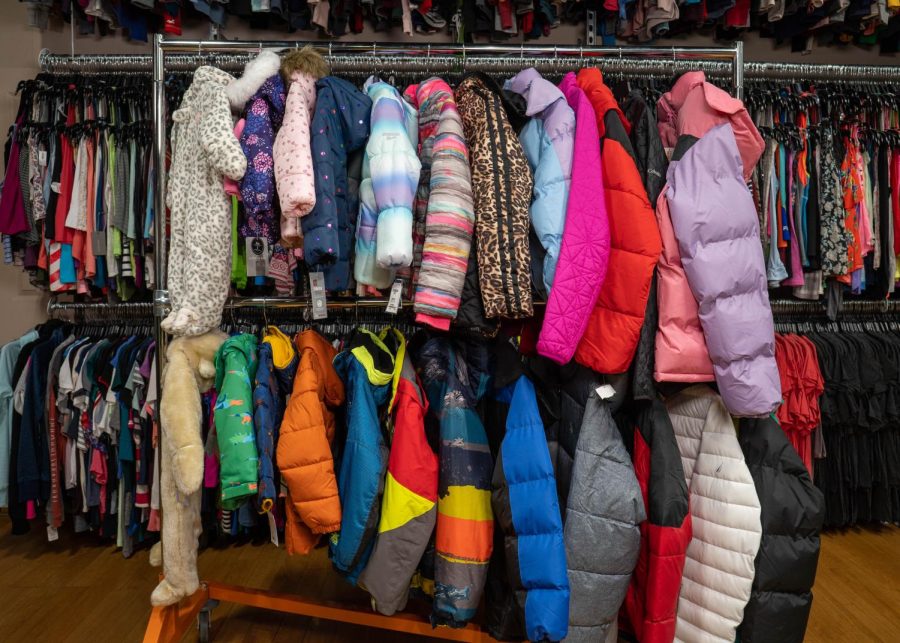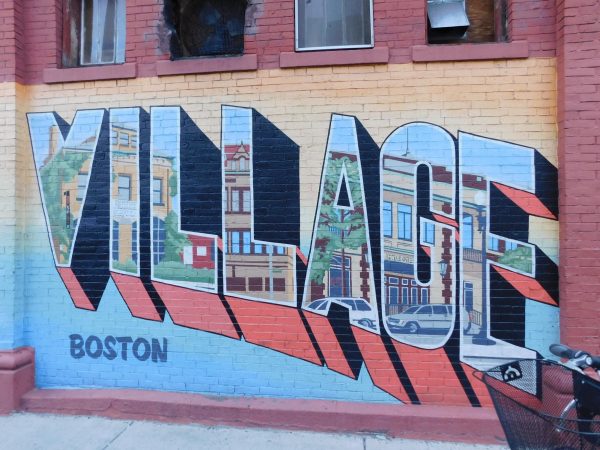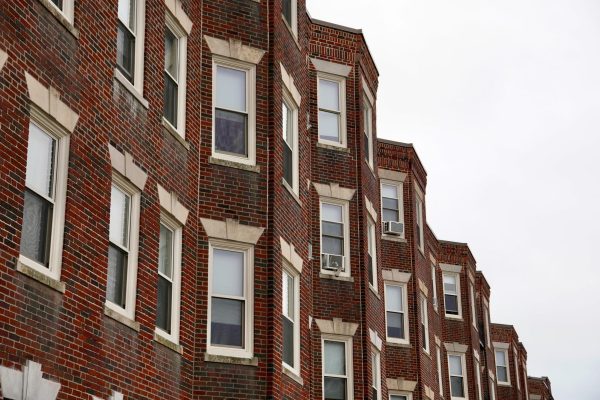Free clothing organizations in Boston work to help children thrive in school
“Once they find something they like, something they have chosen for themselves, their whole attitude and their whole energy changes”
Coats hanging in Catie’s Closet distribution center in Dracut, MA. Photo courtesy of Catie’s Closet.
When teachers send out student supply lists at the end of each summer, they ask for pencils and paper, but kids need more than just academic supplies to attend school.
In locations like Boston, where weather changes rapidly, appropriate garments for all seasons are a necessity. Organizations such as Catie’s Closet, Teen Closet Initiative and One Warm Coat work to improve the lives of students by supplying them with free clothing and hygiene products. While there is not a clear solution to support these students once they graduate high school, these programs hope that providing them with clothes during their school years will help them complete their education.
Kodia Baye Cigna, the Boston program director of Catie’s Closet, explains that difficult weather conditions do not always result in the cancellation of classes. Because of this, some students are absent when they do not have the proper resources to protect them from the weather that day.
“Providing the bare necessities and basic human needs is a pretty good place to start to get students on track to graduate,” Baye Cinga said.
Catie’s Closet is a nonprofit organization created in memory of Catie Bisson who died in 2010 at just 20 years old. Catie’s family was inspired to start a closet at her alma mater, Lowell High School, after remembering a conversation between her and her mother about students experiencing homelessness.
Catie’s family knew that clothing can be a barrier to students’ success and hopes that by providing free clothing in schools, more students can attend and thrive. And while it started as a family passion project, it has now grown much larger. As of this year, the organization has closets located in 120 schools across Massachusetts and New Hampshire, helping more than 80,000 students daily.
The program launched in Boston Public Schools, or BPS, in 2016, and there are currently closets in 47 of the schools. When students need a winter jacket or pair of shoes, they can go into the closet with a faculty member at any time and receive immediate relief. The closets are donation-based, and students can choose from any of the items.
While the closets do provide clothing, they offer so much more.
“A student will visit the closet, and once they find something they like, something they have chosen for themselves, their whole attitude and their whole energy changes,” Baye Cinga said. “Their self-esteem improves, classroom participation improves, interactions with other students improve and attendance improves because they did not have to go home or miss class because they didn’t have that item.”

Furthermore, upon students visiting the closet, the staff can start to build relationships with them and discover what exactly is going on in their lives. From there, staff members can direct students to other resources they may need and help them stay in school.
While Catie’s Closet is entirely based on donations, other programs such as Teen Closet Initiative take a different approach. Teen Closet, run by the Massachusetts Coalition for the Homeless, is operated entirely online.
Teachers and other staff who recognize someone is struggling can reach out to Teen Closet Initiative with a clothing wish list. The products are then ordered through Target and sent directly to the student or to the school.
“Without a clean outfit, students could actually drop out of school, which isn’t something that any of us statisticians would have thought,” said Executive Director Robyn Frost.
Teen Closet Initiative is also a more personalized experience where students are given the exact clothing they need in their size. While Frost believes donations are important, donation-based programs like Catie’s Closet are often more helpful for younger children; whereas, teens can be much more difficult to assist, she said. Teens do not often ask for help as easily, and they are more selective in what they are willing to put on their bodies. Thus, she emphasizes the impact that getting something brand new has on these students.
“When you’re in your teens, you don’t want to stand out at all,” Frost said. “You want to be just like everybody else with that hoodie and those nice sneakers. And you don’t want people to understand what you’re going through.”
Similar to Catie’s Closet and Teen Closet Initiative, One Warm Coat provides free coats to children and adults in need. And with Boston’s harsh winters, programs like One Warm Coat are essential for students’ safety.
Earlier this month, Boston experienced record-low temperatures resulting in the cancellation of all Boston Public Schools on Feb. 3. BPS Superintendent Mary Skipper reminded the community how dangerous cold temperatures can be for students, especially those walking to and from school with wind chills in the negatives.
Patti Zappa, the executive vice president of One Warm Coat, explains that children in school need coats for various reasons, whether they walk to school, take the bus or live in a house without heat. On top of that, coats will ultimately empower these children to have fun outside together and enjoy their school days.
“A lot of schools won’t let kids go outside (to recess) if they don’t have a coat,” Zappa said. “So, if you are in that classroom and you’re being held separately because you don’t have a coat, your family can’t provide one for you, that’s sad. You want kids to be able to go outside and play. Part of learning is playing.”







